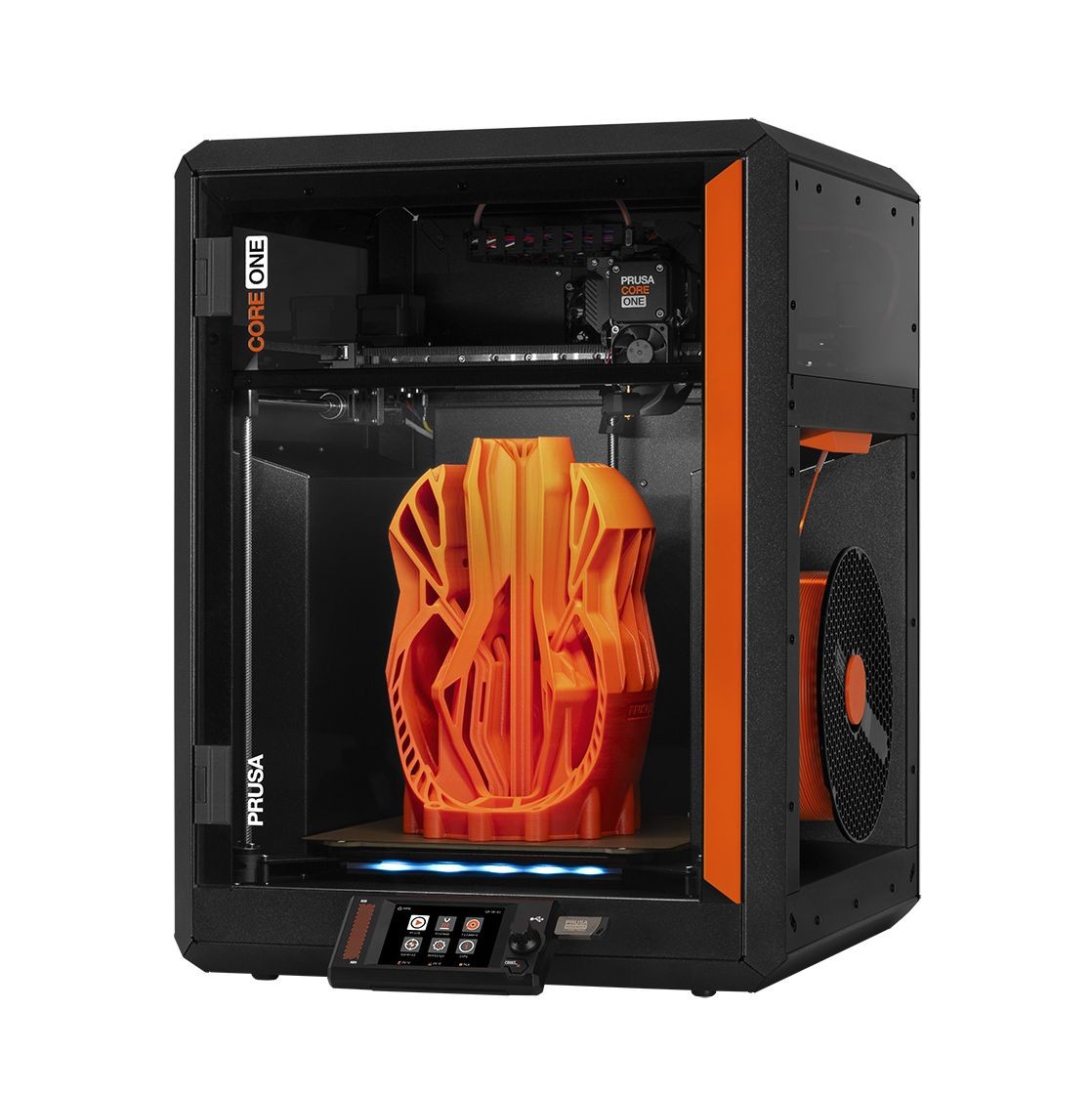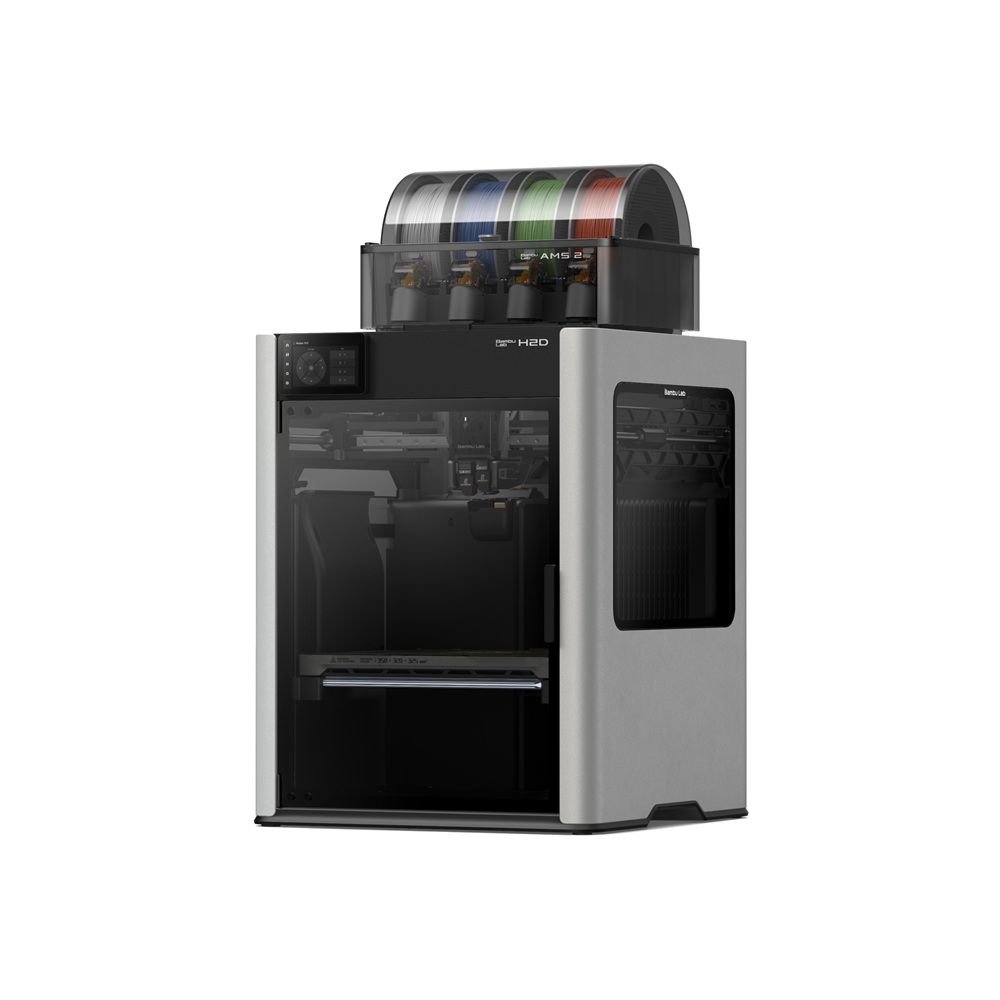Compare Core One vs H2D
Comparison between the best 3D printers
Choose the best 3D printer at the best price. The cheapest 3D printers are here.
Buy a 3D printer here with 3D Fila.
 |
 |
|
| Model | Core One |
H2D |
| Printing Material | Filament | Filament |
| Buy Filament for Prusa Core One | Buy Filament forBambu Lab H2D | |
| Estimated price | $1200,00 | $1899,00 |
| Manufacturer | Prusa | Bambu Lab |
| Release Year | 2025 | 2025 |
| Print Volume [mm] | 250x220x270 | 350x320x325 |
| Printer Size [mm] | 385x340x620 | 492x514x626 |
| Weight [kg] | 14 | 42,3 |
| Power Loss Recovery | YES | YES |
| Enclosed printer | YES | YES |
| Bed Leveling | Automatic | Automatic |
| Filament End Sensor | YES | YES |
| Bed type | Heated | Heated |
| Power supply system | Direct Drive | Direct Drive |
| Standard nozzle | 0,4 | 0,4 |
| Maximum Nozzle Temperature [°C] | 300 | 350 |
| Maximum Bed Temperature [°C] | 120 | 120 |
| Maximum printing speed [mm/s] | 500 | 600 |
| Filament holder | YES | YES |
| Camera for supervision | NO | NO |
| Recommended filaments | PLA, TPU, TPE, HIPS, ABS, PETG, WOOD, PC, PA, PVA, ASA | PLA, PETG, ABS, ASA, TPU, PVA, Nylon (PA) |
| Recommended slicers | Cura, Prusa Slicer, Orca | Bambu Studio |
| Maximum Resolution [mm] | 0,01 | 0,01 |
| Processor | xBuddy 32 bit | |
| Display | Touchscreen 3,5'' | Touchscreen 5'' |
| Power Supply | 240 W | |
| Connectivity | SD | Wifi, Bambu bus, Cartão SD |
| Operating systems | Windows, Linux e Macbook | Windows, Mac, Linux |
| Date of registration in the system | 2024-11-27 | 2025-03-31 |
| Release date | 2025 | 2025 |
| Extra features | The Prusa Core One is a CoreXY 3D printer featuring a robust steel frame, a 3.5" touchscreen, and a heated chamber for technical filaments. It offers 360° cooling for improved print quality and supports upgrades from the MK4S model. With a compact design, a print volume of 270x250x220 mm, and compatibility with the MMU3 for multi-color printing, it stands out for its ease of maintenance, precision, and speeds up to 260% faster than the MK3S+. | Bambu Labs H2D combines high-speed 3D printing with a chamber heated up to 65 °C, dual extrusion with automatic nozzle switching, an AMS for filament drying and exchange, and AI sensors that detect failures. It offers optional laser and digital cutting capabilities, features intelligent calibration through computer vision, vibration control, enhanced fire safety, and real-time camera monitoring. |
| Support for multiple colors and materials (AMS and CFS) | YES | YES |
Notes * |
||
| Cost-benefit | 7 / 10 | 7 / 10 |
| Hardware | 6 / 10 | 8 / 10 |
| Tela | . | . |
| Print volume | 3 / 10 | 4 / 10 |
| Performance | 4 / 10 | 5 / 10 |
Conclusion |
| In comparing the Prusa Core One and the Bambu Lab H2D, both 3D printers cater to different user needs and budgets, making the choice dependent on specific priorities. The Prusa Core One is a solidly-built printer with a slightly lower price point, making it an attractive option for those who value reliability and ease of maintenance. Its compact design, automatic bed leveling, and efficient cooling system are excellent for users interested in producing high-quality prints with various filament types, while its capability for multi-color printing adds versatility. However, its smaller print volume may limit larger projects. Conversely, the Bambu Lab H2D is geared toward advanced users who prioritize speed and cutting-edge technology. It offers a larger print volume, increased maximum printing speed, and sophisticated features like dual extrusion and intelligent calibration, which can significantly enhance the printing experience. Although it comes at a higher price, the extensive capabilities, including AI-assisted functionality and optional cutting features, position it as a future-proof choice for professional or ambitious hobbyist applications. Ultimately, if budget and a slightly smaller print area are critical factors, the Prusa Core One is a commendable choice. However, for those seeking cutting-edge performance and versatility, the Bambu Lab H2D warrants its premium price with advanced features that cater to a broader range of 3D printing needs. |

